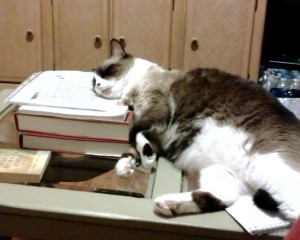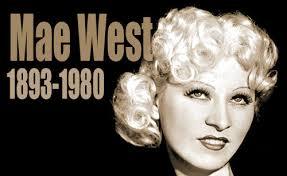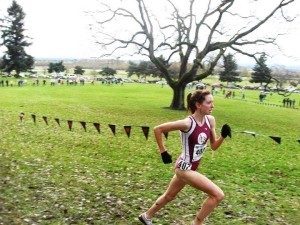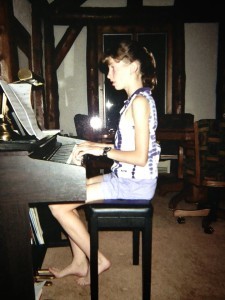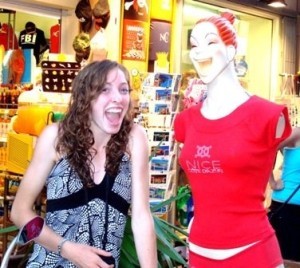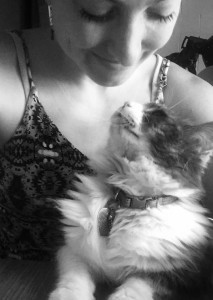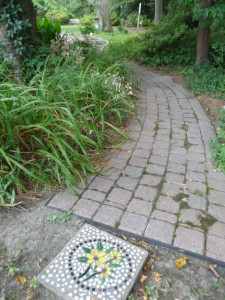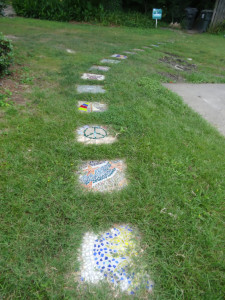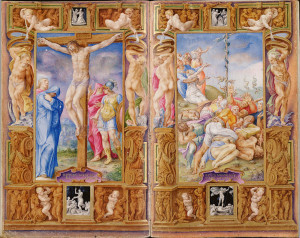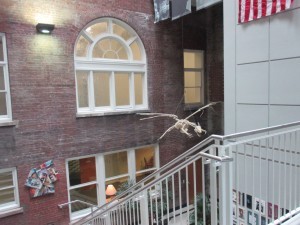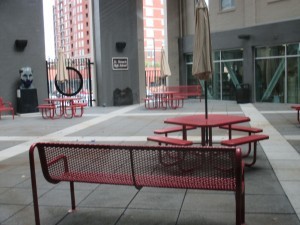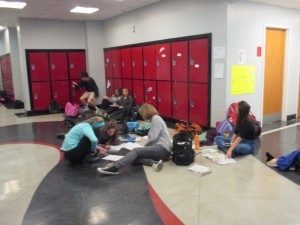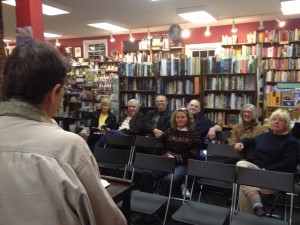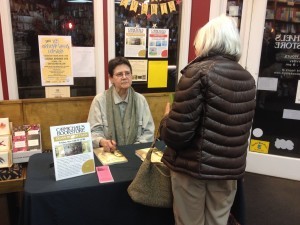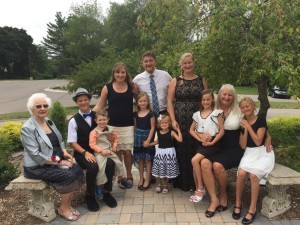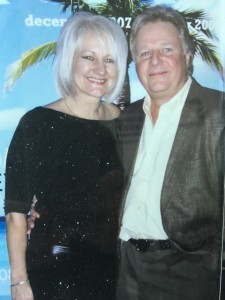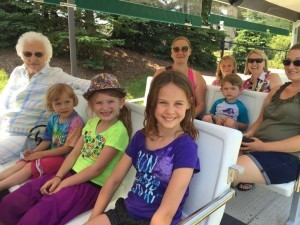Dean Robertson's Blog, page 12
December 20, 2015
End of the Year Sale by Author: 25 Copies, Signed and Shipped


GET THEM FOR THE NEW YEAR

December 17, 2015
Private Sale by Author: 25 Copies, Signed and Shipped
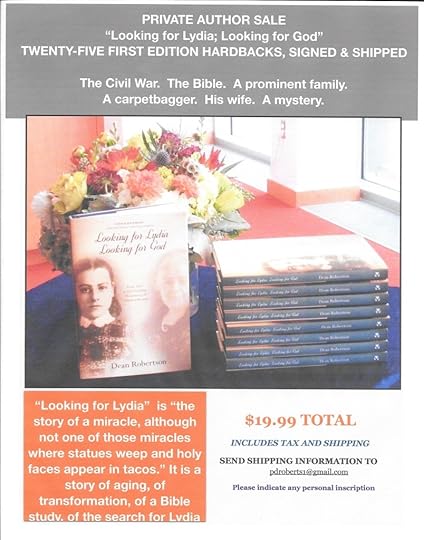
Private Sale by Author
First edition
25 copies available
Signed and shipped $19.99
(includes shipping)

Private Sale by Author
Signed and shipped $19.99
(includes shipping)
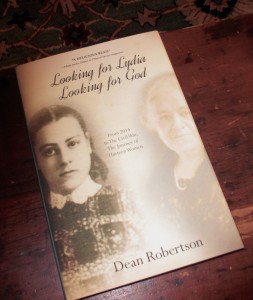
First edition
25 copies available
Hardbacks
Private sale by Author
Signed and shipped $19.99
(includes shipping)
Available until January 1 2016
Order via my email with your shipping information and I’ll send you payment options by return email. Please indicate if you want a personalized inscription.
The post Private Sale by Author: 25 Copies, Signed and Shipped appeared first on Dean Robertson.
December 13, 2015
Remarkable Women: Pendred Noyce’s “Remarkable Minds”
 An Honest Review of a Book of Science and History by a Teacher of Literature Who Is Bored by History and Doesn’t Understand Most Science.
An Honest Review of a Book of Science and History by a Teacher of Literature Who Is Bored by History and Doesn’t Understand Most Science.
I am not a reader who would choose a collection of historical essays about women in science and medicine for my weekend’s pleasure. I am a retired English teacher and can usually be counted on to read fiction rather than history. My first cousin is a historian; my son is a historian. We are not interested in the same books. My cousin might be reading a biography of John Adams, my son a volume of art or political history, while I am contentedly rereading a novel by Jane Austen or Anthony Trollope.


I am also a lover of good essays, and the one magazine subscription I have never given up is The New Yorker.
I don’t read history; I don’t enjoy, and often don’t understand, books about science.
Yet here I sit, in my comfortable armchair, feet up on the ottoman, cup of tea next to me, reading this book about the history of women in science and medicine.
I once audited a colleague’s Introduction to Physics in the private high school where I began my teaching career; I did all the assignments and took all the tests. Much to the delight of my fellow students, many of whom were also my students, I made the lowest grade in the class.
I got up today, picked up the telephone, and rearranged my schedule in order to stay at home and read Remarkable Minds, which is not only history and science but is used as a high school textbook. It, and the earlier Magnificent Minds, recently won Outstanding Science Trade Book awards from the National Science Teachers Association!
And, not only am I reading it, I will say right now that I recommend it to you, without reservation.
Get yourself a copy and prepare to rethink your weekend plans.
For several reasons, Noyce’s historical sketches of women in science and medicine, gathered into the impressive volume, Remarkable Minds: 17 more pioneering women in science & medicine, have eclipsed all my other projects.
They are imaginative; they are well-written; they create characters who engage and enchant; and they tell darned good stories. As an added attraction, they include illustrations and beautifully-crafted timelines. They are a rich mix.
They are–apologies to the author–almost as good as a novel!!
And these are the facts that this author considers important about herself:
Pendred (Penny) Noyce grew up in California’s Santa Clara Valley just as it was beginning to be Silicon Valley. After struggling with severe asthma in her teen years, Penny became a doctor of internal medicine and set up practice in a neighborhood health center in Boston. She also spent 25 years helping to run a foundation established in honor of her father, who was co-inventor of the computer chip and co-founder of Intel. The Noyce Foundation supported improvements in math and science education nationwide, and Penny helped lead or advise improvement efforts especially in Massachusetts, where she lives.
Penny stopped practicing medicine when the youngest of her five children was born. Instead, she focused on science education. When the middle children (twins) left for college, Penny returned to an old love, writing, primarily fiction about science for middle-grade children. Eventually she started a small publishing company, Tumblehome Learning, which is now three years old. Remarkable Minds and its predecessor, Magnificent Minds, grew out of an exhibition about women in science held at the Grolier Club in New York City. Remarkable Minds is Penny’s tenth book, and the second for readers in high school and up. Penny lives in Boston with her husband and a twelfth-grade son who is about to fly.
Like her presentation of the women in Remarkable Minds, Noyce’s short autobiography is a fine balance between the impressive facts and the endearingly personal “a twelfth-grade son who is about to fly.”
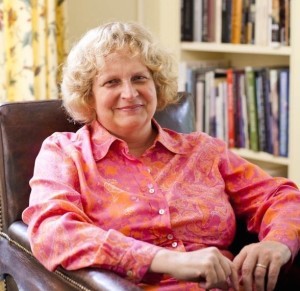
And as we do with Marie and Irene Curie or Hertha Ayrton, we want to know her better.

The women surround us and pull us in.
Noyce has laid out her chapters in a kind of template that includes a photograph of the woman whose work is the subject of the essay and a timeline that places her in the context of science and medicine in her day. The format keeps the reader grounded and able to move from essay to essay, woman to woman, with confidence. As a teacher of English, including the inflexible 14-line, iambic pentameter sonnet, I believe that form allows creativity to flourish. Noyce knows how to use form to facilitate a wonderful development of characters and narratives that are part encyclopedia entry and part melodrama. They are irresistible.
I am enchanted with the creativity, the order, and the attractiveness of the timelines, and one of my favorites is the timeline for Emilie Du Chatelet, the subject of the portrait that is the featured image on this blog. Full-size, each one fills a page and is a work of art.
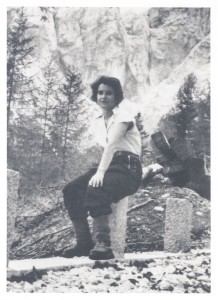
Noyce’s women have made their mark in chemistry and physics, in biology, electrical engineering and medicine. An especially strong chapter introduces a woman named Rosalind Franklin, born in 1920 (d. 1958).
Chapter 16 begins, “On May 2nd, 1952, Rosalind Franklin returned from a meeting of the Royal Society to her King’s College laboratory to check on a DNA sample.”
Franklin’s story becomes a page-turner and a professional nightmare, as her work is “poached” by the future winners of “a Nobel Prize in which she had no share.” James Watson and Francis Crick, who got an unauthorized look–provided by a colleague of Franklin’s–at Franklin’s photograph of a DNA molecule, went on to fame with their “model of DNA structure.”
“More insidiously, Watson’s later portrayal of her in his chatty, catty book established her in the public mind as a bad-tempered, insecure woman who not only refused to share data she couldn’t interpret herself, but who didn’t meet Watson’s standards of feminine allure.”
A story to make you cringe, written in a style that does what all good writing does: makes you care and makes you think.
Hertha Ayrton, the first female engineer–as a child, “always untidy,”–was actively involved in the fight for women’s rights; Sophie Germain’s parents limited the time she was allowed to study because they were concerned about “the effects of study on the female mind;” and, our Cover Girl, Emilie Du Chatelet, a “scholar and woman of society,” was also the “paramour” of Voltaire and eventually his rival in scientific research.
The stories seem endless. The temptation, to which I have fully surrendered, is to read a few, read them again, scan the Table of Contents looking for those of most interest, read more, keep reading.
I stop reading only to review the book and brew another cup of tea. The day is half over. There are things I should be doing. But my tea is ready and Pendred Noyce’s book is waiting for me.
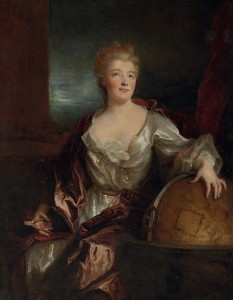
Lydia Hand Bowen Roper made no scientific discoveries, contributed no new knowledge in the field of medicine. Lydia Roper, for whom I am looking in Looking for Lydia; Looking for God, walked the streets of her adopted city, talking with single mothers, helping the poor and the elderly, building shelters, known only to those she helped and to her children. Her oldest daughter carried on Lydia’s mission. Buy yourself or a friend a copy of this book of inspiration and courage. Start the new year reading about a few brave women.
The post Remarkable Women: Pendred Noyce’s “Remarkable Minds” appeared first on Dean Robertson.
December 9, 2015
John’s Jesus #2, “I Am the bread. . .I Am the vine. . .I Am.”
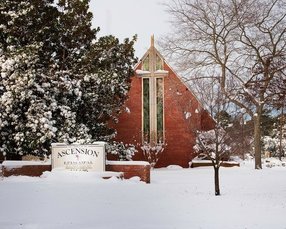
At the end of Chapter 20, the writer of this Gospel makes his purpose clear, “But these are written so that you may come to believe that Jesus is the Messiah, the Son of God, and that through believing you may have life in his name” (20:31).
Today, Sunday November 22, we ask the question for the last time:
Does John’s Gospel say that Jesus is God?
I begin today, not with questions, but by reading two of the “unofficial” I Am statements: when Jesus tells the soldiers who have come for him, “I am he;” and when he answers his questioners, “Before Abraham was, I Am.”
AT THE HEART OF JOHN’S PORTRAYAL OF JESUS IS THE FACT THAT JESUS USES THE WORD(S) BY WHICH YAHWEH IDENTIFIES HIMSELF TO MOSES.
IT IS THE SIMPLE SHATTERING STATEMENT, “I AM.”
“God said to Moses, ‘I am who I am.’ He said further, ‘Thus you shall say to the Israelites, ‘I am has sent me to you”” (Exodus 3:14).
In John’s Gospel, Jesus has become “I AM.”
Like much in the highly structured Gospel of John, the I Am statements come as a set of seven.
The bread of life (6:35) “Then Jesus said to them, ‘Very truly, I tell you, it was not Moses who gave you the bread from heaven, but it is my Father who gives you the true bread from heaven. For the bread of God is that which comes down from heaven and gives life to the world.’ They said to him, ‘Sir, give us this bread always.’ Jesus said to them, ‘I am the bread of life. Whoever comes to me will never be hungry. . .’”
The light of the world (8:12) “Again Jesus spoke to them, saying, ‘I am the light of the world. Whoever follows me will never walk in darkness but will have the light of life.’”
The gate for the sheep (10:7) “‘Very truly, I tell you, anyone who does not enter the sheepfold by the gate but climbs in by another way is a thief and a bandit. The one who enters by the gate is the shepherd of the sheep. The gatekeeper opens the gate for him, and the sheep hear his voice. He calls his own sheep by name and leads them out. . .and the sheep follow him because they know his voice. . .Jesus used this figure of speech with them, but they did not understand what he was saying to them. So again Jesus said to them, ‘Very truly, I tell you, I am the gate for the sheep. . .I am the gate. Whoever enters by me will be saved.’”
The good shepherd (10:11) “‘I am the good shepherd. The good shepherd lays down his life for the sheep. . .I am the good shepherd. I know my own and my own know me, just as the Father knows me and I know the Father. And I lay down my life for the sheep’”
The resurrection and the life (11:25) “Martha said to Jesus, ‘Lord, if you had been here, my brother would not have died. But even now I know that God will give you whatever you ask of him.’ Jesus said to her, ‘Your brother will rise again.’ Martha said to him, ‘I know that he will rise again in the resurrection on the last day.’ Jesus said to her, ‘I am the resurrection and the life. Those who believe in me, though they die, will live, and everyone who lives and believes in me will never die’”
The way, the truth, and the life (14:6) “Thomas said to him, ‘Lord, we do not know where you are going. How can we know the way?’ Jesus said to him, ‘I am the way, and the truth, and the life. No one comes to the Father except through me. If you know me, you will know my Father also. From now on you do know him and have seen him.’ Philip said to him, ‘Lord, show us the Father, and we will be satisfied.’ Jesus said to him, ‘Have I been with you all this time, Philip, and you still do not know me? Whoever has seen me has seen the Father’”
The true vine (15:1) “‘I am the true vine, and my Father is the vinegrower . He removes every branch in me that bears no fruit. Every branch that bears fruit he prunes to make it bear more fruit. . .Just as the branch cannot bear fruit by itself unless it abides in the vine, neither can you unless you abide in me. I am the vine, you are the branches. Those who abide in me and I in them bear much fruit. . .’”
I read without interruption and without discussion: I am the bread, the light, the way, the truth, the resurrection, the life, the gate, the shepherd, the vine.
I am.
Our priest asks: why does Jesus identify himself as these particular things, what does this identity tell us about Jesus? About what is offered here? What does this identity mean to me?
My response is immediate–God is in these basic elements of the material world, in this life we live.
Pierre Teilhard de Chardin, one of the oddest of Jesuits, and sometimes one of my favorites, wrote,
“Throughout my whole life, during every minute of it, the world has been gradually lighting up and blazing before my eyes until it has come to surround me, entirely lit up from within.”
Because there is a special Thanksgiving service following Sunday School today, our numbers are down. In fact, the group consists of possibly six or seven women, including me. And our discussion is different; there are more declarations of basic Christian faith, unrelated to questions about John’s depiction of Jesus. The new rector says that not only John, but all the Gospels, in some way say that Jesus is God.
I find myself up against an old question, though unspoken here: doesn’t all this questioning and digging weaken your faith? When will you stop asking questions and just believe?
I will stop asking questions when there’s no breath left in me. For me, seeking God is finding God. It is in the bold asking that we meet the Divine. Witness Jacob; witness Job; Moses, Sarah, Rebekkah, Eve, Magdalene at the open tomb, even the young girl, Mary.
C.S. Lewis, that reluctant convert to Christianity, writes in Surprised by Joy,
“In a sense the central story of my life. . .is that of an unsatisfied desire which is itself more desirable than any other satisfaction. I call it Joy. . .”
I pose a final question.
Do you like John’s Jesus?
And from the rector, “John’s Gospel has always been troubling to me,” but she’s sure in time she will “come to it.”
And even now, she tells us that she can’t read the Prologue without crying:
“In the beginning was the Word, and the Word was with God, and the Word was God. . .and the Light shines in the darkness, and the darkness did not overcome it.”
I am not so sure that I will “come to it.” And I often weep on reading beautiful poetry.
Another Episcopal priest I know asked me, “What if Jesus is really like that?” And after a couple of minutes’ thought, he added, “I think Luke and I will go in the other room to talk.”
I think I prefer Luke’s Jesus who, we read in Acts, just “went about doing good” (10:38)
The post John’s Jesus #2, “I Am the bread. . .I Am the vine. . .I Am.” appeared first on Dean Robertson.
December 1, 2015
What a Dame: Remember Mae West
 Classic Movie Review by Ellen Bunton
Classic Movie Review by Ellen Bunton(and her eager assistant, Meatball)
A Regular Monthly Feature
The first Wednesday of the month.
December 2 2015
WHAT A DAME
Sunday, Nov. 22, 2015, marked the the 35th anniversary of the death of a remarkable woman: Mae West.
Writer, actress, and comedian, Mae was born in Brooklyn on August 17 in 1893 to a German immigrant mother and a prizefighter father. She made her first stage appearance at the age of five at a church social.
What an ironic debut.
She played in vaudeville and on the Broadway stage long before Hollywood beckoned. She wrote and starred in a play called “SEX” and although the play was a success she was arrested and prosecuted on a morals charge and actually served eight days of a ten-day sentence.
She received two days off for good behavior and, no, I am not kidding.
She went to Hollywood in 1932 and her movies “She Done Him Wrong” and “I’m No Angel” helped save Paramount Pictures from bankruptcy. When the censors cracked down on movies in the 1930’s she had to depend on double-entendres to circumvent the powers that be.
 She even made it into the dictionary when WW2 troops referred to their PFD’s (Portable Flotation Devices) as “Mae Wests” because, when fully operative, they resembled a buxom woman.
She even made it into the dictionary when WW2 troops referred to their PFD’s (Portable Flotation Devices) as “Mae Wests” because, when fully operative, they resembled a buxom woman.
A lot older than most “sex symbols” of her day, her wit is what probably will be remembered the most. She wrote and delivered some of the most memorable lines in Hollywood history:
“When I’m good I’m very very good, but when I’m bad I’m better.
“I used to be Snow White, but I drifted”
AND
“Good sex is like good bridge. If you don’t have a good partner, you
better have a good hand.”
Mae West was able to avoid the marriage, alcohol, and drug issues many others of her day encountered. I always said she laughed herself all the way to the bank and into Hollywood history.
What a dame!
There are no hints that Lydia Roper was a Mae West, but the search for her is fascinating nonetheless. For a great read, and a wonderful Christmas present, buy several copies of Looking for Lydia; Looking for God
The post What a Dame: Remember Mae West appeared first on Dean Robertson.
November 28, 2015
Mundane Perfection by Rachael Steil: Writer and Runner

“To live is the rarest thing in the world. Most people exist, that is all.” ~Oscar Wilde
Rachael Steil is a recent graduate of Aquinas College in Grand Rapids, Michigan, with a Bachelor of Arts in English. Steil has published articles about running and about running with an eating disorder in Michigan Runner magazine, as well as poetry and prose in the Aquinas College literary journal, Sampler.
She began writing a memoir about attempting a raw food diet while racing collegiately during her time at Aquinas, and has presented on the subject as a student and through the Go Boldly, Love Your Body campaign in Grand Rapids.
Steil is a level 1 USA track and field certified coach, and is currently coaching at Grandville High in Grand Rapids.
She has received sixth place All-American accolades in cross country as well as seventh place in the NAIA track nationals. She plans to continue coaching, work towards the publication of her book, and discover what new adventures await her as a YMCA lifeguard while she navigates the world of writing, editing, and publication..

My childhood was wonderful. I grew up in a loving, caring family. I had spectacular friends.
I was the awe of everyone as the “famous” runner in elementary school. I was the artist, the writer, the A+ student.
I was perfect. And being perfect is a full time job.
I don’t know how it happened, but at some point I must have decided that maintaining that perfection was, indeed, my job–my whole purpose.
And that internal demand robbed me of my happiness.
The obsession took over my life in sixth grade, when I worried about how much sleep I got (often going to bed at 8 p.m.); when I feared I would get sick and miss school (perfect attendance for years was a result of that); when I checked over my homework three times a night to make sure I got everything right; when I lost connections with my friends because hanging out, going out, reaching out were just “fun,” and I had the important work of being perfect.
The demand for perfection grew.
I still made a few friends over the years, still enjoyed a social life in high school, but by my senior year the perfection that had been spread over many facets of my life became centered on one:
You must eat perfectly.
By eating “perfectly” I lost too much weight.
By eating “perfectly” I lost too many friends.
But I also knew that eating “perfectly” helped me to run faster in a sport that meant everything to me at the time, a sport in which success gained me praise and admiration. A sport in which I could, if I ate right, just possibly achieve perfection!
I didn’t have time to notice that I wasn’t finding much meaning to life outside of nutrition research and running fast.
If once in a while I had a good time with friends, it was short-lived. I rushed immediately back to the nutrition and restriction.
I didn’t know how to let go–how to dance, how to free myself from the internal rules.
My friends, my parents, my friends’ parents all decided I was just “high-strung.” They suggested I relax.
But I didn’t know how to relax.
I ate food to exist in a life only meant for running.
But when the binge-eating began, feelings and imperfection roared back into life as my body screamed, I want to eat to LIVE!
Years later, after finding ways to balance my food extremes and after serious introspection, I began to see the real Rachael emerge from beneath.
I found myself dancing, going out with friends, traveling, writing about more than just food, creating lasting relationships, and reaching out to others who need help.
Suddenly the weight I had gained was almost pleasing, not ugly at all. Some days I even liked it. My body was feeling more, and my mind was urging me to try a greater variety of food, stay out late without worrying about curfew, apply for jobs that would have scared me before, invite people to hang out without waiting to be invited.
My life became more than just using my body to run fast for a sport that really, in the grand scheme of things, didn’t matter as much as I thought it did.
In other words, I was beginning to actually have a life.
And for now that life is made up of my interest in art, my passion for writing, and my enthusiasm for helping others by coaching.
I laugh hard when I am ecstatic, cry hard when it hurts, and wade right into the vast array of emotions I feel–because this is what it means to be human, to live, to embrace success and mistakes.
This is what it means to live rather than merely exist.
Eat in a way that will give you energy, that will allow you to enjoy treats with your friends.
Sip wine overlooking vineyards.
Visit various restaurants to try new foods around the world.
Laugh over popcorn and pretzels dipped in peanut butter without a worry in the world, or enjoy the crunch of a fresh salad and the luxury of popping blueberries into your mouth on a warm summer afternoon.
Whether it’s a preoccupation with food, an obsession with perfection, or holing yourself up because you are too afraid of what could happen in a potentially dangerous world, the greatest gift you will ever give to yourself is to dare to try anything that scares you even just a little–because in doing so, you find your path beyond mere existence and into a life where you can thrive.
CONTACT INFO:
http://www.runninginsilence.com
http://rachaelrosesteil@gmail.com
http://LinkedIn: www.linkedin.com/profile/rachaelsteil
http://Twitter: @rachaelsteil
Facebook Group: Running in Silence
The obsession with finding Lydia Roper, and the “runner’s high” of turning out page after page fueled the writing of Looking for Lydia; Looking for God. Order it right here from Amazon and Barnes and Noble, in hardcover, paperback, or Ebook. This story of women and aging and transformation, of a Bible study, a carpetbagger, and his wife, will fill your days and your heart.
Buy one for Christmas for someone you love.
The post Mundane Perfection by Rachael Steil: Writer and Runner appeared first on Dean Robertson.
November 21, 2015
John’s Jesus #1, “In the beginning was the Word”
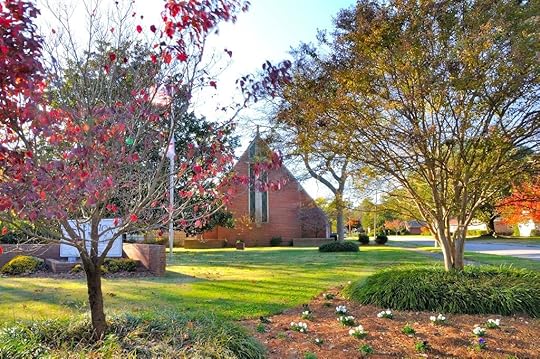
In March, I talked about a particular passion of mine—The Many Faces of God in the Hebrew Bible. This time around, I’m going to explore what I am discovering are the many faces of Jesus in the New Testament, and then focus on the fascinating and enigmatic Jesus of John’s Gospel.
John’s Jesus is radically different from the Jesus we meet in Matthew or Mark or Luke. He is not the babe in a manger; he is not Mark’s man of action; he is not Matthew’s Jewish carpenter. He performs no exorcisms, tells no parables, does not exhort us to love our enemies. He engages in what scholars call “messianic self-definition.” In other words, he talks a lot about himself and his identity.
I am reminded of a line from one of my favorite poets and songwriters, Leonard Cohen, who calls us to “bless the continuous stutter of the Word being made into Flesh.”
John’s Jesus is that Word.
Ascension is a remarkable church in many ways, and they have a lovely secret which I have only recently discovered. Behind the thoroughly predictable church basketball court a path of stones begins. It winds around, passing arrangements of more stones and an altar before stopping at a labyrinth.
Does John’s Gospel say that Jesus is God?
On Sunday October 25, the first of the four Sundays I am scheduled to talk about John’s Gospel at Ascension, I was elated to see the room filling up with familiar faces from March, a few that were new, and Ascension’s new priest. We had a nearly full house.
I started as I always do. I started with questions.
What do you know; what do you think you know, what do you believe about The Gospel According to John?
Have you read it?
Do you read it often? Do you read it more or less often than the other Gospels?
Several people admitted to never having read the Gospel; many guessed that they had read it once a very long time ago. A couple said they had read it recently, and one young man had come with Bible in hand and was able to read passages to illustrate his ideas and some of mine. A mixed group–the very best kind.
And the opinions about the Gospel and about the Jesus of the Gospel were equally diverse. Someone said right away she thought of the Jesus of John’s Gospel as very kind and gentle. She thought she remembered there were a lot of children.
Someone else said he felt exactly the opposite, that John’s Jesus was aloof and conceited.
The young man with his Bible read the familiar passage from John 3:16: “For God so loved the world that he gave his only son so that everyone who believes in him may not perish but may have eternal life.”
He chose this passage to illustrate the point he had just made that John’s Jesus was “a healer and world-changer.”
The next few verses are more conditional: “Those who believe in him are not condemned; but those who do not believe are condemned already because they have not believed in the name of the only Son of God.”
Another member of the group noted that when Jesus talks about how you are saved–through belief in him–he is “strong and powerful,” and that he takes a hard line, “He gives you a couple of choices. Pick one!”
We considered the main differences in the character of Jesus in Mark, in Matthew, in Luke and in John. Those first three, while certainly having their individual quirks, are comparable.
John is a thing apart.
As we consider John’s Jesus, we will see that—in addition to what Jesus has to say about himself—the writer of this Gospel describes him, right from the beginning, in a manner completely different from the other Evangelists:
“In the beginning was the Word, and the Word was with God, and the Word was God. He was in the beginning with God. All things came into being through him, and without him not one thing came into being. What has come into being in him was life, and the life was the light of all people. The light shines in the darkness, and the darkness did not overcome it” (1:1-5).
“And the Word became flesh and lived among us” (1:14).
This idea of “the word” or “logos,” long thought to be an exclusively Greek concept, was in fact something in which Hebrew religious tradition was steeped.
In both traditions, this Word is the power or entity that is a kind of mediator between God and the world, possibly a personification of God’s Truth.
It is, in any case, a term with which John’s readers would have been familiar.
John reaches beyond either Hebrew or Greek ideas when he claims that “the Word became flesh.”
On Sunday November 8 we gather again.
A major difference in John’s Gospel, revealed in the opening verses, is that, while the Synoptics all start with a story, John begins with a theological statement.
And so he sets the tone and the priority for the entire Gospel.
Although John tells the intriguing and exclusive story of Jesus traveling often to Jerusalem for the major Jewish festivals, the point of his storytelling is theological. As he celebrates each feast, Jesus declares himself the replacement for its main symbol: Jesus becomes the manna; Jesus becomes the Temple; Jesus becomes the water; Jesus becomes the sacrificial lamb. Jesus is the better way; Jesus is the only way.
“I am the way, and the truth, and the life” (14:6).
It is a radical claim.
Someone asks, “If you only read John, would you get the message?”
Someone else responds, “John is the message.”
I wonder if we’ve clarified exactly what “message” we’re talking about. Is the message in the Synoptics the same as John’s message? If so, what is it?
We are back on November 15th for the third and next-to-last session. These go so quickly for me, never enough time.
I bring up an idea unfamiliar to most and unnerving to some: the ancient concept of “sympathetic magic.”
Moses raises the bronze serpent in the desert and the Israelites are healed from the bites of poisonous serpents:
“So Moses made a serpent of bronze, and put it upon a pole; and whenever a serpent bit someone, that person would look at the serpent of bronze and live (Numbers 21:9).
Sculpture of a serpent at Mt. Nebo, Jordan.
Jesus is raised on the cross at Golgotha and we are healed of our sins:
Does John’s Gospel say that Jesus is God?
Looking for Lydia; Looking for God explores the Gospel According to Luke in some detail and tells the story of how a dozen women in their nineties rediscovered all the Gospels and, through their stories, discovered themselves, each other, and maybe even God.
You can order it from Amazon or Barnes & Noble online in hardback, paper, or ebook.
November 15, 2015
Notes from the Road: Third Stop, Louisville, Book Signing
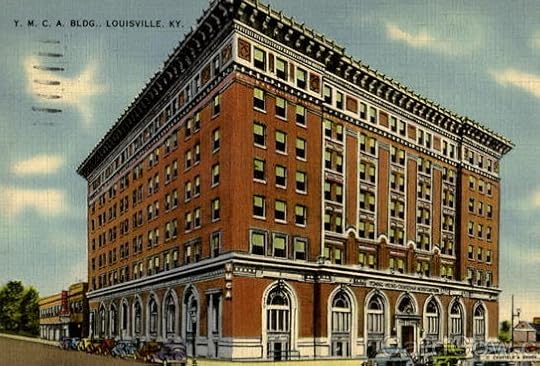
“I once had a grant that financed classes in Women in the Hebrew Bible for a group of low-income women in Louisville, Kentucky. Those classes went on for almost four years. When they were finally over, the women who had been participating the longest took me for a day at the races at Churchill Downs. We stayed in touch for many years” (Looking for Lydia; Looking for God,” 9).
“The first time I taught Women in the Bible in Louisville, Kentucky, one of the women in the group, a seventy-year-old black grandmother, who had raised eight children and was now raising her three grandchildren, sat up at the end of our discussion about Eve, slammed her hand down on the table, and said, ‘I been listenin’ to that Adam’s rib shit all my life, and I guess I just don’t have to listen to it anymore!’ ” (Looking for Lydia, 42).
“And, finally, Tom Pike, my headmaster at St. Francis High School in Louisville, Kentucky, made it possible for me to put together my first class in the Bible in 1989. He changed my life in ways I’m sure he doesn’t know. My lifelong study of the Bible, and so the search for Lydia, surely started there” (Looking for Lydia, Acknowledgments, 171).
Sometime in the late 1980’s I began my first year of secondary school teaching, having declared, mantra-like, for many years, “If I ever have to teach in high school, I’ll get out of teaching.”
I had been in Louisville for a couple of years, working on a degree and teaching composition courses at the University of Louisville. I had finally admitted my dissatisfaction and had been accepted to the Ph.D. program in English at the University of Virginia. I was almost literally packed and on my way to Charlottesville, when I agreed to “just talk to this man who has started a high school downtown.”
I spent the better part of a day at that odd school, in the old YMCA building, right in the middle of an unrestored downtown. I listened to Tom Pike describe his vision for the school. I came home and unpacked. I taught there for ten years.
Since then, St. Francis has grown and changed and the photographs on their website bear little resemblance to the small, unassuming school where I started my life’s work, a school that made a place for the most brilliant and the quirkiest bunch of adolescents I’ve ever encountered.
I adored every one of them.
I am both excited and anxious about seeing this new incarnation of that old school. In 1980 we rented space in the basement and on the third floor. The walls were dirty, the hallways above us noisy with other tenants. We were very happy.
What I see when I walk through the doors today is Tom Pike’s vision realized, in every detail. This is what he imagined, this is what he saw that brought him, and all of us, downtown. This is what he described to me, on that first day: this place of air and light and open space and walls filled with art. This place of beauty where students come to learn.
I take my own pictures.
When I land in Louisville on Wednesday morning I will be returning to the school that still feels like home to me. I’ll be met at the airport by an old colleague and friend. I’ll spend time with Tom Pike; I’ll have a few hours with two students from thirty years ago. I will return to Norfolk a little sad. We survive and continue after losses, but they remain losses all the same.
‘Louisville, Kentucky’ Words to conjure by.
Louisville is only partly about the Kentucky Derby. I liked best, not the horses, but the balloon race the Saturday before. I was taken there the first time by my friend, Eddie. We arrived in the dark, while the hundred balloons lay flat in the field, and we walked among them and waited for the fires to be lit and the sounds of air filling balloons and then the nearly unbelievable sight of one huge balloon after another lurching to life, as the sun rose over the city.
It is Tuesday November 10th, and I am still at home in Norfolk. Tomorrow I leave for Louisville, Looking for Lydia in hand. I have booked an outrageously early flight so I can arrive with the day still ahead of me.
Wednesday
Event #1 The Arrival with visits: Prologue
5:15 am Leave Norfolk
My friend, Ellen, arrived at 3:30 in the morning. I was packed and ready and we headed out. Ellen is a master navigator and an excellent driver, and I nodded off on the way to the airport. 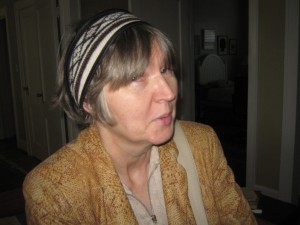
9:00 am Arrive Louisville
My plane landed in Louisville nearly a half hour early. And there was Susan, looking just as she always does, except for dark hair turned a beautiful white over the years. 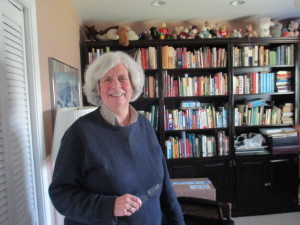
Straight back to the house for lunch–Susan’s squash tart–then she ran errands, including a stop at one of Louisville’s premier restaurants, La Peche, to pick up an embarrassment of culinary delights to carry us through the week: Wednesday dinner: shrimp with pasta; Thursday: pork loin with sweet dark cherries; Friday: a La Peche specialty-chicken pot pies (these will serve the three of us and my two students who plan to be here).
Susan knows that I don’t require entertainment, or even constant company, and I spent a couple of hours alone, happily unpacking and settling in. After a thirty-year friendship, Susan is one of the people with whom I am simply myself, and I putter here as if I were back in Norfolk.
Susan and Joanna
I hadn’t seen Joanna by the time I climbed the stairs for an early bedtime. She was at her university job–teaching, going to meetings, band practice at night. Joanna is Professor of Music and Chair of the Music Department at Indiana University Southeast, where Susan teaches Biology. It has somehow taken all these years for the chance to spend time with Joanna, and I am looking forward to it.
This is a woman whose skills and intellect are a powerful counterpoint to Susan’s Renaissance interests, which include entomology, Dorothy L. Sayers, Anthony Trollope, and Bach.
When I met her, this maker of squash tarts served White Castle hamburgers with a fine red wine at her formal dinner parties.
Joanna has the slightly withdrawn focus of someone who has had one commitment her entire life; she started playing the piano when she was three years old.
Tom
At the last minute, Tom called to say he couldn’t make it to Susan’s. He had come from a long funeral and was preparing to leave the next day for a grandchild’s wedding on the west coast. He was, simply, too tired. He sounded older, and I was aware for a moment of all the years.
Thursday
Event #2 St. Francis School: Prologue
Parents
Almost no parents showed up, a disappointment only briefly, until I realized I suddenly had an unexpected hour to relax, sit, and catch up with several St. Francis alums who had made a surprise appearance. So far, nobody is buying books, and I am both a little frantic about money and beginning to suspect that this return to St. Francis is about much, much more than selling books.
Students
A full hour of energy, discussion, great questions, full engagement with the whole 150-strong student body. I remember that these are St. Francis students.
I started them off with my YouTube video, “Lydia’s Bloopers,” which turned out to be one of those last minute ideas that works. It cut right through any expectations–on their part or mine–that we were about to spend an hour in which yet another teacher lectured while they tried to listen. 
I followed the “Bloopers” with an offer: send me an essay and I will publish it as a “guest blog” on my website. It will go out on the social media. Several students asked for my email address. I would love to be able to do this for these young writers.
I am aware of how much I miss the dynamic of adolescents and a good independent school.
English Department
A gourmet lunch ordered by the English Department. My former colleague, Ron, appeared for my presentation to the students, and he joined us. I was aware, as he spoke in a quiet familiar way about one of Shakespeare’s plays, that no one I’ve known since knows more about the Bard and no one has ever quite taught the plays like Ron did. Thirty years ago he taught me nearly everything I needed to know about teaching. Today, he just outclassed everyone in the room.
Friday
Event #3 Students: Prologue
Thomas Clay Jr., class of 1988
Bates Fisher Webster, class of 1984
And so they came, one after the other. Thomas arrived early, carrying a dessert he had made and about which he was clearly a little anxious. He spent a few minutes in the kitchen, grating chocolate, which gave us all time to take a breath and settle in to this much-anticipated moment. Susan and Joanna made it easy; they are comfortable people to be around.
Bates was late and came in looking much more beautiful than I remembered. Her face was bright from what I thought was sun, but she tells me is the result of welding this morning without a mask. She comments on her “wrinkles.” Actually, her face is marked with the fine lines of her fifty years, and they only enhance her looks.
She seems unaware of this quality, as she was of the movements of her body on the soccer field. Bates is at home in her body as only an athlete can be.
Event #4 Carmichael’s Books: Prologue
No time to prepare for this final event; Thomas and Bates are here, dinner is served, and we begin the process of stuttering our way through small talk to the safety of real conversation. We have come together to talk about something that has happened to Bates. Bates and Thomas and I have become a team; Susan and Joanna elect to join us.
We find, in the event, that we don’t really talk that much about the situation; we have really come together just for the palpable sense that we are together. We have needed to see each other after all these years, to look across a table and think–‘Yes. This is real.’
7:00 pm Presentation, Question-and-Answer, Book signing
A small audience. A pleasant and warm space. A good talk, not especially focused, certainly not adhering to my outline and notes. I know I am leaving out things. It doesn’t seem to matter. People are engaged and ask questions. More students from the past walk through the doors.
Helen Jones, Tom Pike’s wife, comes in, smiling, and tells me quietly how disappointed Tom was not to see me. I think I will try to go back after the first of the year; I suddenly know how important seeing Tom is.
People buy nearly all the books the store has.
Tomorrow I will be at home with Isaac and my grandson and life will resume.
We all come back to the house, along with Brooke Barnes, class of 1989, a student who graduated with my son and is now a pediatrician in Ohio. Brooke and I have had a few long conversations by phone, and she has driven in to see me.
We finish off Thomas’ dessert, read the news from Paris. I find the video of the President singing “Amazing Grace” at the funeral in Charleston. We are quiet.
Louisville, Kentucky, after thirty years, has been an intense experience.
In many ways, the seed for Looking for Lydia; Looking for God was planted in Louisville, Kentucky, far from the coastal city in Virginia that serves as its setting.
The community of caring people and the love among them are the same. Looking for Lydia is a perfect gift, for Christmas or any other time–for a friend, a family member, or yourself.
The post Notes from the Road: Third Stop, Louisville, Book Signing appeared first on Dean Robertson.
Notes from the Road: Third Stop, Louisville, Kentucky

“I once had a grant that financed classes in Women in the Hebrew Bible for a group of low-income women in Louisville, Kentucky. Those classes went on for almost four years. When they were finally over, the women who had been participating the longest took me for a day at the races at Churchill Downs. We stayed in touch for many years” (Looking for Lydia; Looking for God,” 9).
“The first time I taught Women in the Bible in Louisville, Kentucky, one of the women in the group, a seventy-year-old black grandmother, who had raised eight children and was now raising her three grandchildren, sat up at the end of our discussion about Eve, slammed her hand down on the table, and said, ‘I been listenin’ to that Adam’s rib shit all my life, and I guess I just don’t have to listen to it anymore!’ ” (Looking for Lydia, 42).
“And, finally, Tom Pike, my headmaster at St. Francis High School in Louisville, Kentucky, made it possible for me to put together my first class in the Bible in 1989. He changed my life in ways I’m sure he doesn’t know. My lifelong study of the Bible, and so the search for Lydia, surely started there” (Looking for Lydia, Acknowledgments, 171).
Sometime in the late 1980’s I began my first year of secondary school teaching, having declared, mantra-like, for many years, “If I ever have to teach in high school, I’ll get out of teaching.”
I had been in Louisville for a couple of years, working on a degree and teaching composition courses at the University of Louisville. I had finally admitted my dissatisfaction and had been accepted to the Ph.D. program in English at the University of Virginia. I was almost literally packed and on my way to Charlottesville, when I agreed to “just talk to this man who has started a high school downtown.”
I spent the better part of a day at that odd school, in the old YMCA building, right in the middle of an unrestored downtown. I listened to Tom Pike describe his vision for the school. I came home and unpacked. I taught there for ten years.
Since then, St. Francis has grown and changed and the photographs on their website bear little resemblance to the small, unassuming school where I started my life’s work, a school that made a place for the most brilliant and the quirkiest bunch of adolescents I’ve ever encountered.
I adored every one of them.
I am both excited and anxious about seeing this new incarnation of that old school. In 1980 we rented space in the basement and on the third floor. The walls were dirty, the hallways above us noisy with other tenants. We were very happy.
What I see when I walk through the doors today is Tom Pike’s vision realized, in every detail. This is what he imagined, this is what he saw that brought him, and all of us, downtown. This is what he described to me, on that first day: this place of air and light and open space and walls filled with art. This place of beauty where students come to learn.
I take my own pictures.
When I land in Louisville on Wednesday morning I will be returning to the school that still feels like home to me. I’ll be met at the airport by an old colleague and friend. I’ll spend time with Tom Pike; I’ll have a few hours with two students from thirty years ago. I will return to Norfolk a little sad. We survive and continue after losses, but they remain losses all the same.
‘Louisville, Kentucky’ Words to conjure by.
Louisville is only partly about the Kentucky Derby. I liked best, not the horses, but the balloon race the Saturday before. I was taken there the first time by my friend, Eddie. We arrived in the dark, while the hundred balloons lay flat in the field, and we walked among them and waited for the fires to be lit and the sounds of air filling balloons and then the nearly unbelievable sight of one huge balloon after another lurching to life, as the sun rose over the city.
It is Tuesday November 10th, and I am still at home in Norfolk. Tomorrow I leave for Louisville, Looking for Lydia in hand. I have booked an outrageously early flight so I can arrive with the day still ahead of me.
Wednesday
Event #1 The Arrival with visits: Prologue
5:15 am Leave Norfolk
My friend, Ellen, arrived at 3:30 in the morning. I was packed and ready and we headed out. Ellen is a master navigator and an excellent driver, and I nodded off on the way to the airport. 
9:00 am Arrive Louisville
My plane landed in Louisville nearly a half hour early. And there was Susan, looking just as she always does, except for dark hair turned a beautiful white over the years. 
Straight back to the house for lunch–Susan’s squash tart–then she ran errands, including a stop at one of Louisville’s premier restaurants, La Peche, to pick up an embarrassment of culinary delights to carry us through the week: Wednesday dinner: shrimp with pasta; Thursday: pork loin with sweet dark cherries; Friday: a La Peche specialty-chicken pot pies (these will serve the three of us and my two students who plan to be here).
Susan knows that I don’t require entertainment, or even constant company, and I spent a couple of hours alone, happily unpacking and settling in. After a thirty-year friendship, Susan is one of the people with whom I am simply myself, and I putter here as if I were back in Norfolk.
Susan and Joanna
I hadn’t seen Joanna by the time I climbed the stairs for an early bedtime. She was at her university job–teaching, going to meetings, band practice at night. Joanna is Professor of Music and Chair of the Music Department at Indiana University Southeast, where Susan teaches Biology. It has somehow taken all these years for the chance to spend time with Joanna, and I am looking forward to it.
This is a woman whose skills and intellect are a powerful counterpoint to Susan’s Renaissance interests, which include entomology, Dorothy L. Sayers, Anthony Trollope, and Bach.
When I met her, this maker of squash tarts served White Castle hamburgers with a fine red wine at her formal dinner parties.
Joanna has the slightly withdrawn focus of someone who has had one commitment her entire life; she started playing the piano when she was three years old.
Tom
At the last minute, Tom called to say he couldn’t make it to Susan’s. He had come from a long funeral and was preparing to leave the next day for a grandchild’s wedding on the west coast. He was, simply, too tired. He sounded older, and I was aware for a moment of all the years.
Thursday
Event #2 St. Francis School: Prologue
Parents
Almost no parents showed up, a disappointment only briefly, until I realized I suddenly had an unexpected hour to relax, sit, and catch up with several St. Francis alums who had made a surprise appearance. So far, nobody is buying books, and I am both a little frantic about money and beginning to suspect that this return to St. Francis is about much, much more than selling books.
Students
A full hour of energy, discussion, great questions, full engagement with the whole 150-strong student body. I remember that these are St. Francis students.
I started them off with my YouTube video, “Lydia’s Bloopers,” which turned out to be one of those last minute ideas that works. It cut right through any expectations–on their part or mine–that we were about to spend an hour in which yet another teacher lectured while they tried to listen. 
I followed the “Bloopers” with an offer: send me an essay and I will publish it as a “guest blog” on my website. It will go out on the social media. Several students asked for my email address. I would love to be able to do this for these young writers.
I am aware of how much I miss the dynamic of adolescents and a good independent school.
English Department
A gourmet lunch ordered by the English Department. My former colleague, Ron, appeared for my presentation to the students, and he joined us. I was aware, as he spoke in a quiet familiar way about one of Shakespeare’s plays, that no one I’ve known since knows more about the Bard and no one has ever quite taught the plays like Ron did. Thirty years ago he taught me nearly everything I needed to know about teaching. Today, he just outclassed everyone in the room.
Friday
Event #3 Students: Prologue
Thomas Clay Jr., class of 1988
Bates Fisher Webster, class of 1984
And so they came, one after the other. Thomas arrived early, carrying a dessert he had made and about which he was clearly a little anxious. He spent a few minutes in the kitchen, grating chocolate, which gave us all time to take a breath and settle in to this much-anticipated moment. Susan and Joanna made it easy; they are comfortable people to be around.
Bates was late and came in looking much more beautiful than I remembered. Her face was bright from what I thought was sun, but she tells me is the result of welding this morning without a mask. She comments on her “wrinkles.” Actually, her face is marked with the fine lines of her fifty years, and they only enhance her looks.
She seems unaware of this quality, as she was of the movements of her body on the soccer field. Bates is at home in her body as only an athlete can be.
Event #4 Carmichael’s Books: Prologue
No time to prepare for this final event; Thomas and Bates are here, dinner is served, and we begin the process of stuttering our way through small talk to the safety of real conversation. We have come together to talk about something that has happened to Bates. Bates and Thomas and I have become a team; Susan and Joanna elect to join us.
We find, in the event, that we don’t really talk that much about the situation; we have really come together just for the palpable sense that we are together. We have needed to see each other after all these years, to look across a table and think–‘Yes. This is real.’
7:00 pm Presentation, Question-and-Answer, Book signing
A small audience. A pleasant and warm space. A good talk, not especially focused, certainly not adhering to my outline and notes. I know I am leaving out things. It doesn’t seem to matter. People are engaged and ask questions. More students from the past walk through the doors.
Helen Jones, Tom Pike’s wife, comes in, smiling, and tells me quietly how disappointed Tom was not to see me. I think I will try to go back after the first of the year; I suddenly know how important seeing Tom is.
People buy nearly all the books the store has.
Tomorrow I will be at home with Isaac and my grandson and life will resume.
We all come back to the house, along with Brooke Barnes, class of 1989, a student who graduated with my son and is now a pediatrician in Ohio. Brooke and I have had a few long conversations by phone, and she has driven in to see me.
We finish off Thomas’ dessert, read the news from Paris. I find the video of the President singing “Amazing Grace” at the funeral in Charleston. We are quiet.
Louisville, Kentucky, after thirty years, has been an intense experience.
In many ways, the seed for Looking for Lydia; Looking for God was planted in Louisville, Kentucky, far from the coastal city in Virginia that serves as its setting.
The community of caring people and the love among them are the same. Looking for Lydia is a perfect gift, for Christmas or any other time–for a friend, a family member, or yourself. Find it on Amazon and Barnes & Noble online in hardback, paperback, and ebook. Those links are available on this website.
November 7, 2015
Women and Compromise: A Friend Answers a Question
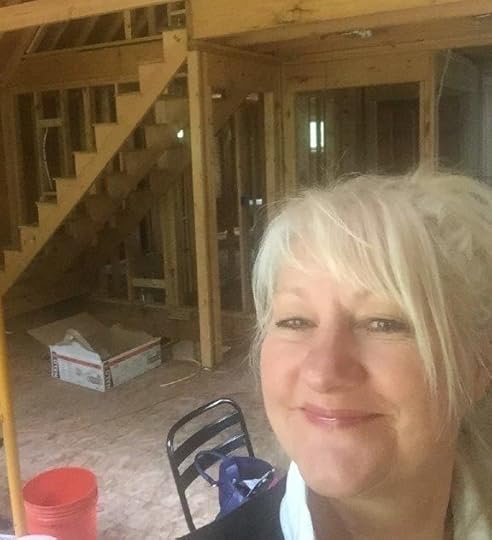
“I have been thinking about your question regarding my Michael and want to respond but I hope you won’t read it until sometime in the next weeks when you are sitting around doing nothing.”
“And I know now what my questions for Lydia will be, should I find her: What did you want? What did you get? What did you lose? We don’t know when Lydia met John Roper, but she saw something in this veteran of the California gold mines and the battlefields of Virginia, headed south with dreams of fortune, that allowed her to walk away from that Philadelphia life and go with him. What was Lydia Hand Bowen after? What dreams was she chasing?” (Looking for Lydia; Looking for God, 56).
When Teri came by, on the day I arrived in Grand Rapids, we spent several hours catching up, and–as has been true for the two of us since the day we met–we wasted little time with small talk, even after nearly fifteen years. She told me about her children and her grandchildren–her family–always the great loves of her life.
And she told me about her Michael. They have been together for eight years, and I am aware of how many of her dreams of the ideal relationship she has set aside.
And so I asked: “What is it about this relationship that it has lasted for eight years? Tell me about this man.”
I am sure I asked those questions as much for myself as for Teri, and as much for all of us as for Teri and me. I, too, wonder what I wanted and what I got and about the nature of the compromises I made to have this life I now live.
“And so, the ladies at the Roper Home and I are looking for God and Lydia and possibly ourselves. We have sometimes been frustrated, sometimes afraid; we have found good work, we have found each other. We are discovering God in some new ways” (Looking for Lydia, 164).
And Teri’s first answer was:
“I’d like to think about that.”
I have enjoyed pounding nails next to him as he builds his cabin. It is beautiful and very well done, and he is a smart worker and planner, very much like my father was. He will buy just the right amount of lumber for the weekend depending on what work he plans to do. He has paid for every board as he goes and so will own it when he is done.
He is all about pleasing me.
He massages me, especially my hands.
I am sixty years old and have been a court reporter since 1976; that’s thirty-nine years. These are hard-working hands.
No one has ever wanted to do that for me.
We love spending time together.
It is precious, like a vacation every time.
We laugh.
He takes me to fancy restaurants on New Year’s Eve and takes me to German restaurants whenever we are near one.
He loves to dance and will dance in the aisle of anywhere with me whether anyone else is dancing or not.
He sends me roses! He buys me sexy shirts for Christmas.
He once sold fine men’s suits, and he is always well dressed.
We do a lot of naked dancing, actually, at the cabin, when we are alone.
He loves and cares for his ninety-eight-year-old mother and is a star at the nursing home, where all the ladies wait for him to say hello and goodbye to them, which he does, of course, calling each one by name.
His boys were nervous about me, but I assured them I am not a threat and I understand that this is their cabin. He enables both boys ridiculously, which, thank God, is none of my business. The twenty-eight-year-old, his girlfriend, and her baby have just moved out; the thirty-year-old is still there.
Michael’s ex-wife has been living there since August until she moves into her new home on November 1st. I told him to keep his pants on and his door locked, and he assured me she’s not a threat. My one boundary is that we are sexually with only each other, and about that we have remained steadfast.
He does occasionally buy rounds of tequila for a table of girls. He is always the life of the party–a drinker and outgoing, like me. I can’t judge him.
He is great at sales and is Number One in his company.
He always pays for everything, and I like the powerfulness of his doing that. I enjoy being provided for, although if my children are coming to the cabin I buy the groceries for the weekend.
We are going to Cabo San Lucas on his company trip in February and to Costa Rica in March, where he hopes to find an apartment to rent for three months out of the year. We will see. I am not sure how long I can be away, although now that I am going back to free-lancing, no longer committed to a full-time job, I imagine that may be part of the plan.
We talk about sex a lot and have sex at least twice every weekend we are together.
He is very much a liberal Democrat, and his folks were union workers. He loves to talk about history and politics and is very very knowledgable about both. We disagree so vehemently about abortion that we can’t even talk about it.
He always wants to know what he can do to please me and begs me to tell him how. So I am not sure how functional or dysfunctional we are. He is always amazed to hear me say he is my best ever, as I don’t think he believes he gives as much as he should. He often says, “You need to find someone who will marry you.”
But somewhere along the way I finally gave up my Cinderella views and am much more willing to take each moment as it comes. I am grateful for the time we get to spend together and am finding it wonderful to let my Good come to me rather than having expectations or trying to manipulate someone into a relationship. It’s not always been easy, but my faith in my True Provider just gets stronger and stronger, and I know more and more that the blessings will come to me in God’s good time (and NOT sooner!).
I cannot believe the life I get to live and constantly feel like I am getting away with something.
I am especially good if I get to three meetings a week and my chiropractor and naturopath every few months. I have to work everyday on letting go of my alcoholic sons and my codependent daughter and not living in fear for my grandchildren.
None of us knows the day or the hour.
I realized with my dad passing that one day we all just go away and that I need to be in each moment as fully as possible. I have felt more relief than grief at that death and realize that all my life I have been waiting for the next critique or judgment of my life.
I am only sixty and I am growing up and into my full self!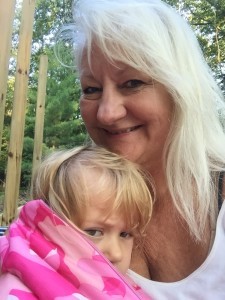
As you approach the end of this year and take a look back, order a copy of Looking for Lydia; Looking for God from Amazon or Barnes&Noble online, and join those women in their nineties as they unexpectedly discover themselves and each other by asking just these hard questions.
The post Women and Compromise: A Friend Answers a Question appeared first on Dean Robertson.


